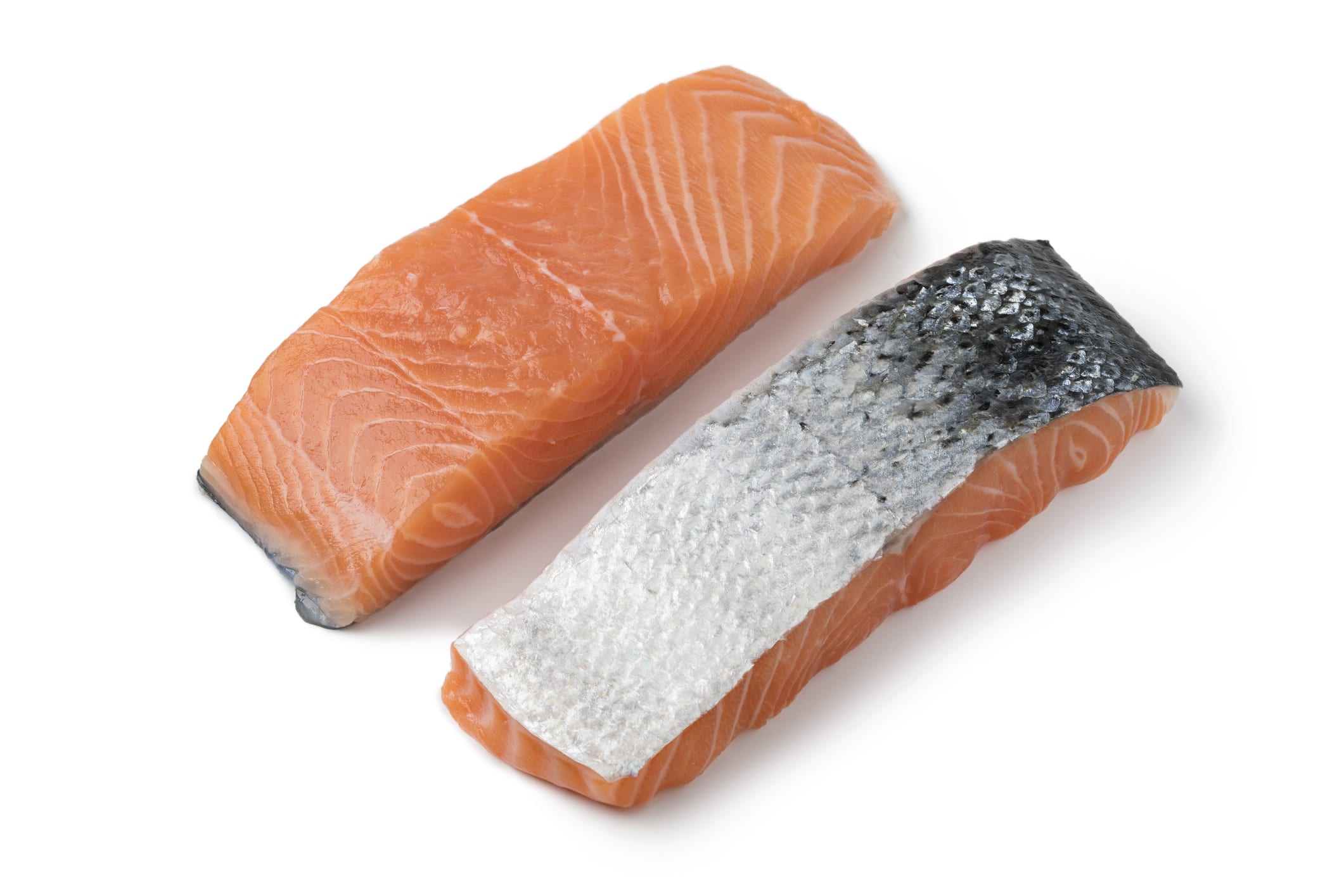N-3 long-chain fatty acids including α-linolenic acid (ALA,18:3n-3), Eicosapentaenoic acid (EPA, 20: 5n-3 and Docosahexaenoic acid (DHA, 22;6n-3), are essential fatty acids for salmon growth and health. They can not be synthesized by fish body and need to be provided by fish meal and fish oil or algae supplements.
ALA serves as a precursor to other important N-3 long chain fatty acids such as EPA and DHA but the conversion rate in the human body is relatively low. It is important for maintaining heart health, reducing inflammation, and supporting brain function. Plant feed ingredients such as flaxseeds and canola oil contain high levels of ALA.
EPA plays a crucial role in reducing inflammation, supporting hearth, and maintain mental health. DHA is vital for brain and eye development and function. It also supports heart health and cognitive function. Both EPA and DHA can only be provided by fish meal, fish oil and certain algae supplements.

Salmon is naturally rich in EPA and DHA, key N-3 long-chain fatty acids. However, with modern salmon diets comprising only about 30% fish meal and fish oil, there is a potential risk of EPA and DHA deficiency in farmed salmon.
Salmon naturally contains high levels of EPA and DHA, making it a rich source of N-3 long-chain fatty acids. However, current diets for salmon only contain approximately 30% fish meal and fish oil, possibly resulting in EPA and DHA deficiency. In addition, recently it is reported that higher dietary concentration of N-3 long chain fatty acids might reduce sea lice infection and therefore, the requirement of N-3 long-chain fatty acids based on high level of plant-based ingredients needs to reconsider.
Based on the diet containing 35% fish meal and fish oil, Bou et al., 2017 indicated that extra 1.5% EPA or 2% DHA supplementation obtained best growth performance for salmon. Dietary concentration of 0.5% of EPA plus DHA is considered the lowest level for Atlantic salmon parr in Fresh water (Qian et al., 2020). Interestingly, the highest EPA:DHA ratio showed a lower number of wounded fish at the end of the grow-out period, implying that the partial replacement of fish oil with algae oil may achieve a balanced EPA:DHA ratio.
A study compiled by our Redox Animal Nutritionists.